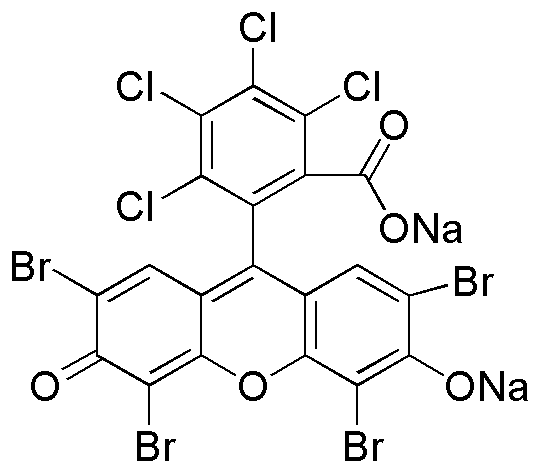Phloxine B Certified is widely utilized in research focused on:
- Biological Staining: This compound is commonly used as a dye in histology and microbiology to stain cells and tissues, allowing researchers to visualize cellular structures under a microscope.
- Food Industry: It serves as a color additive in various food products, enhancing visual appeal and helping to maintain consistency in color, which is crucial for consumer acceptance.
- Cosmetics: Phloxine B is employed in cosmetic formulations, providing vibrant color to products like lipsticks and blushes, while also being safe for skin application.
- Pharmaceuticals: In the pharmaceutical industry, it is used for coloring tablets and capsules, ensuring easy identification and improving patient compliance.
- Environmental Monitoring: This compound is utilized in environmental studies to track pollutants and assess water quality, offering a reliable method for researchers to monitor ecological health.
General Information
Properties
Safety and Regulations
Applications
Phloxine B Certified is widely utilized in research focused on:
- Biological Staining: This compound is commonly used as a dye in histology and microbiology to stain cells and tissues, allowing researchers to visualize cellular structures under a microscope.
- Food Industry: It serves as a color additive in various food products, enhancing visual appeal and helping to maintain consistency in color, which is crucial for consumer acceptance.
- Cosmetics: Phloxine B is employed in cosmetic formulations, providing vibrant color to products like lipsticks and blushes, while also being safe for skin application.
- Pharmaceuticals: In the pharmaceutical industry, it is used for coloring tablets and capsules, ensuring easy identification and improving patient compliance.
- Environmental Monitoring: This compound is utilized in environmental studies to track pollutants and assess water quality, offering a reliable method for researchers to monitor ecological health.
Documents
Safety Data Sheets (SDS)
The SDS provides comprehensive safety information on handling, storage, and disposal of the product.
Product Specification (PS)
The PS provides a comprehensive breakdown of the product’s properties, including chemical composition, physical state, purity, and storage requirements. It also details acceptable quality ranges and the product's intended applications.
Certificates of Analysis (COA)
Search for Certificates of Analysis (COA) by entering the products Lot Number. Lot and Batch Numbers can be found on a product’s label following the words ‘Lot’ or ‘Batch’.
*Catalog Number
*Lot Number
Certificates Of Origin (COO)
This COO confirms the country where the product was manufactured, and also details the materials and components used in it and whether it is derived from natural, synthetic, or other specific sources. This certificate may be required for customs, trade, and regulatory compliance.
*Catalog Number
*Lot Number
Safety Data Sheets (SDS)
The SDS provides comprehensive safety information on handling, storage, and disposal of the product.
DownloadProduct Specification (PS)
The PS provides a comprehensive breakdown of the product’s properties, including chemical composition, physical state, purity, and storage requirements. It also details acceptable quality ranges and the product's intended applications.
DownloadCertificates of Analysis (COA)
Search for Certificates of Analysis (COA) by entering the products Lot Number. Lot and Batch Numbers can be found on a product’s label following the words ‘Lot’ or ‘Batch’.
*Catalog Number
*Lot Number
Certificates Of Origin (COO)
This COO confirms the country where the product was manufactured, and also details the materials and components used in it and whether it is derived from natural, synthetic, or other specific sources. This certificate may be required for customs, trade, and regulatory compliance.


